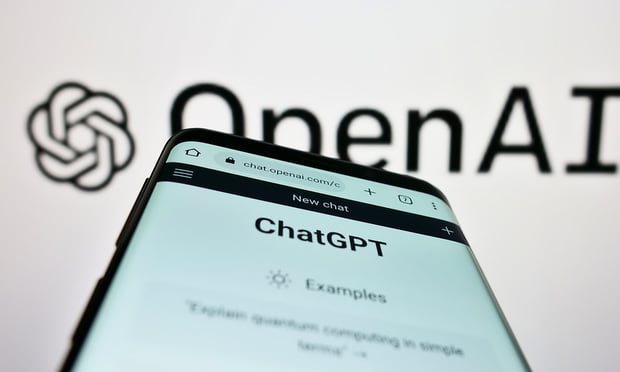Features
The First Amendment and the Lanham Act At the Supreme Court
In March, the Supreme Court heard a blockbuster trademark case with significant implications for trademark law. After argument, reversal seems likely as questioning from the justices suggests that a long-standing precedent is unlikely to survive unscathed. But the Court also indicated concern over the broader implications of this case in the arts, entertainment, and publishing. Here's what you need to know about Jack Daniel's v. VIP Products.
Features

ChatGPT, Generative AI and IP Considerations
Part Two of a Two-Part Article Part One of this article briefly detailed what "generative AI" tools like ChatGPT are and provided an overview of key legal considerations. Part Two looks at upcoming AI-specific legislation and the path forward for firms wanting to use AI in practice.
Features

Music Rates and Royalties In 2023
Part Two of a Two-Part Article Part One of this article discussed mechanical licenses and interactive streaming services. Part Two covers songwriters and music publishers, and record labels.
Features

Licensing AI Content
The primary issue associated with securing a licensor's consent for Internet AI intellectual property is that normally the licensor is a computer program, hence not a legal person.
Columns & Departments
IP News
Federal Circuit Affirms the Board's Finding of Anticipation Because Prior Art Patent and References Incorporated Therein Inherently Meet the Disputed Claim Limitations Federal Circuit Affirms a Finding of Infringement Because the District Court Correctly Construed "a" and "said" and Rejects Anticipation Argument on Waiver Grounds Federal Circuit Vacates Judgment of Non-Infringement Because the Underlying Stipulation Failed to Provide Sufficient Detail for the Court to Resolve Certain Claim Construction Issues
Features

ChatGPT, Generative AI and IP
Part One of a Two-Part Article Corporate legal departments are increasingly receiving requests from business clients to use ChatGPT or similar AI-powered tools in their operations. These requests can be urgent, with business clients demanding enablement from legal. This article is in two parts: Part One briefly details what "generative AI" tools like ChatGPT are and provides an overview of key legal and IP considerations, including by looking forward to upcoming AI-specific legislation in the EU and the U.S.
Features

Authorship and Copyright In Hybrid AI-Human Collaborative Works
The United States Copyright Office recently issued a letter ruling on the copyrightability of Kristina Kashtanova's comic book-like work, Zarya of the Dawn. The Kashtanova ruling indicates that the Copyright Office's determination of copyrightability of works involving use of AI will rely on whether the author is able to control and foresee with some measure of predictability the output of the authorial process
Features

Innovative Uses and IP Considerations of 3D Printing
Companies involved in 3D printing must be cognizant of the patent rights obtained by their competitors in this space and must be proactive in identifying and securing their own patent rights to effectively compete in this continually developing field.
Columns & Departments
IP News
Proving Damages for Trademark Infringement In the Eleventh Circuit
Features

Handling IP Ownership Issues In Remote Work
Even with legal assumptions that certain intellectual property rights in works created by employees are owned by the employer, these should not be relied upon exclusively. A well-drafted employee-agreement form is increasingly essential in light of the explosive growth of remote and flexible work arrangements.
Need Help?
- Prefer an IP authenticated environment? Request a transition or call 800-756-8993.
- Need other assistance? email Customer Service or call 1-877-256-2472.
MOST POPULAR STORIES
- The DOJ's New Parameters for Evaluating Corporate Compliance ProgramsThe parameters set forth in the DOJ's memorandum have implications not only for the government's evaluation of compliance programs in the context of criminal charging decisions, but also for how defense counsel structure their conference-room advocacy seeking declinations or lesser sanctions in both criminal and civil investigations.Read More ›
- The DOJ's Corporate Enforcement Policy: One Year LaterThe DOJ's Criminal Division issued three declinations since the issuance of the revised CEP a year ago. Review of these cases gives insight into DOJ's implementation of the new policy in practice.Read More ›
- Use of Deferred Prosecution Agreements In White Collar InvestigationsThis article discusses the practical and policy reasons for the use of DPAs and NPAs in white-collar criminal investigations, and considers the NDAA's new reporting provision and its relationship with other efforts to enhance transparency in DOJ decision-making.Read More ›
- Don't Sleep On Prohibitions on the Assignability of LeasesAttorneys advising commercial tenants on commercial lease documents should not sleep on prohibitions or other limitations on their client's rights to assign or transfer their interests in the leasehold estate. Assignment and transfer provisions are just as important as the base rent or any default clauses, especially in the era where tenants are searching for increased flexibility to maneuver in the hybrid working environment where the future of in-person use of real estate remains unclear.Read More ›
- Developments in Distressed LendingRecently, in two separate cases, secured lenders have received, as part of their adequate protection package, the right to obtain principal paydowns during a bankruptcy case.Read More ›
